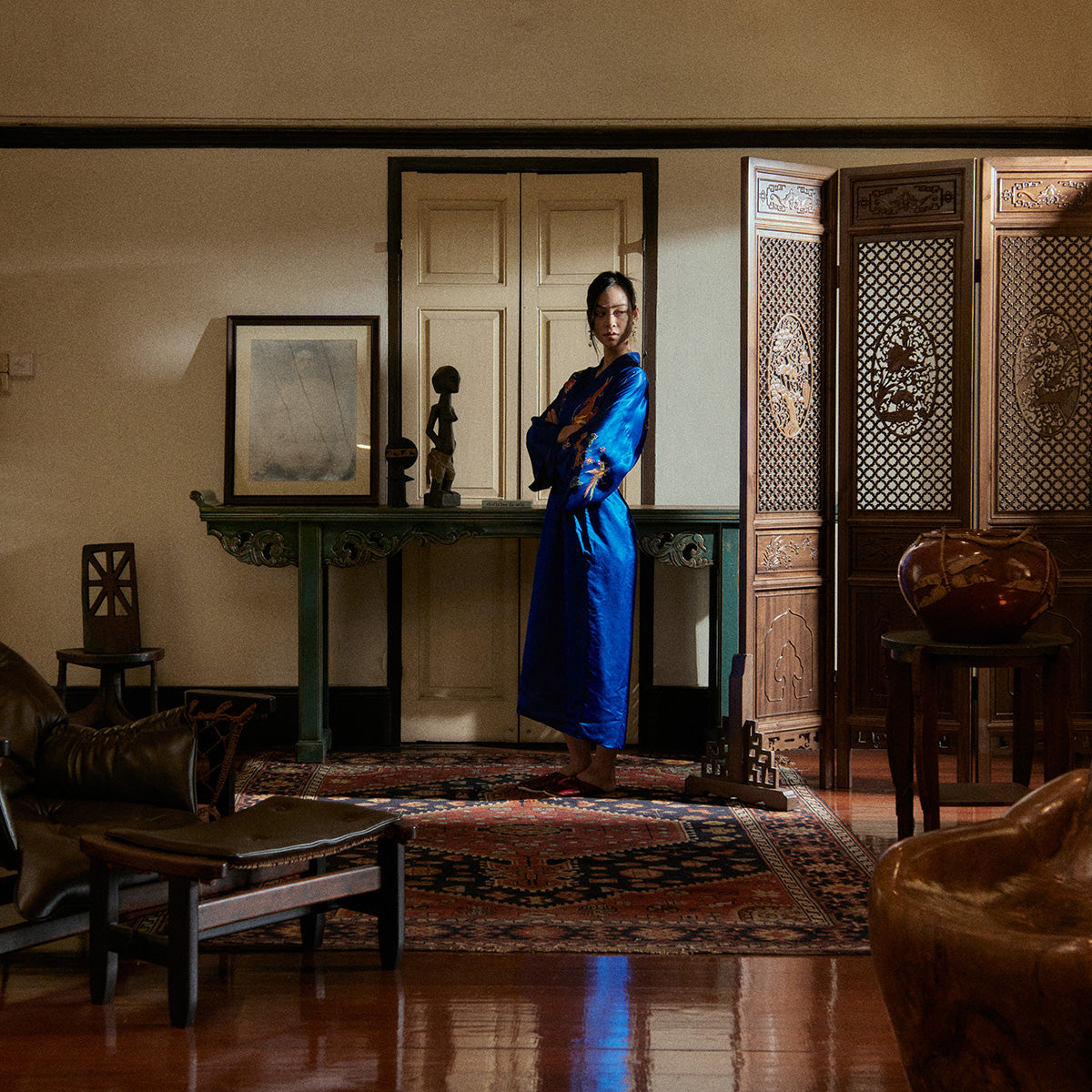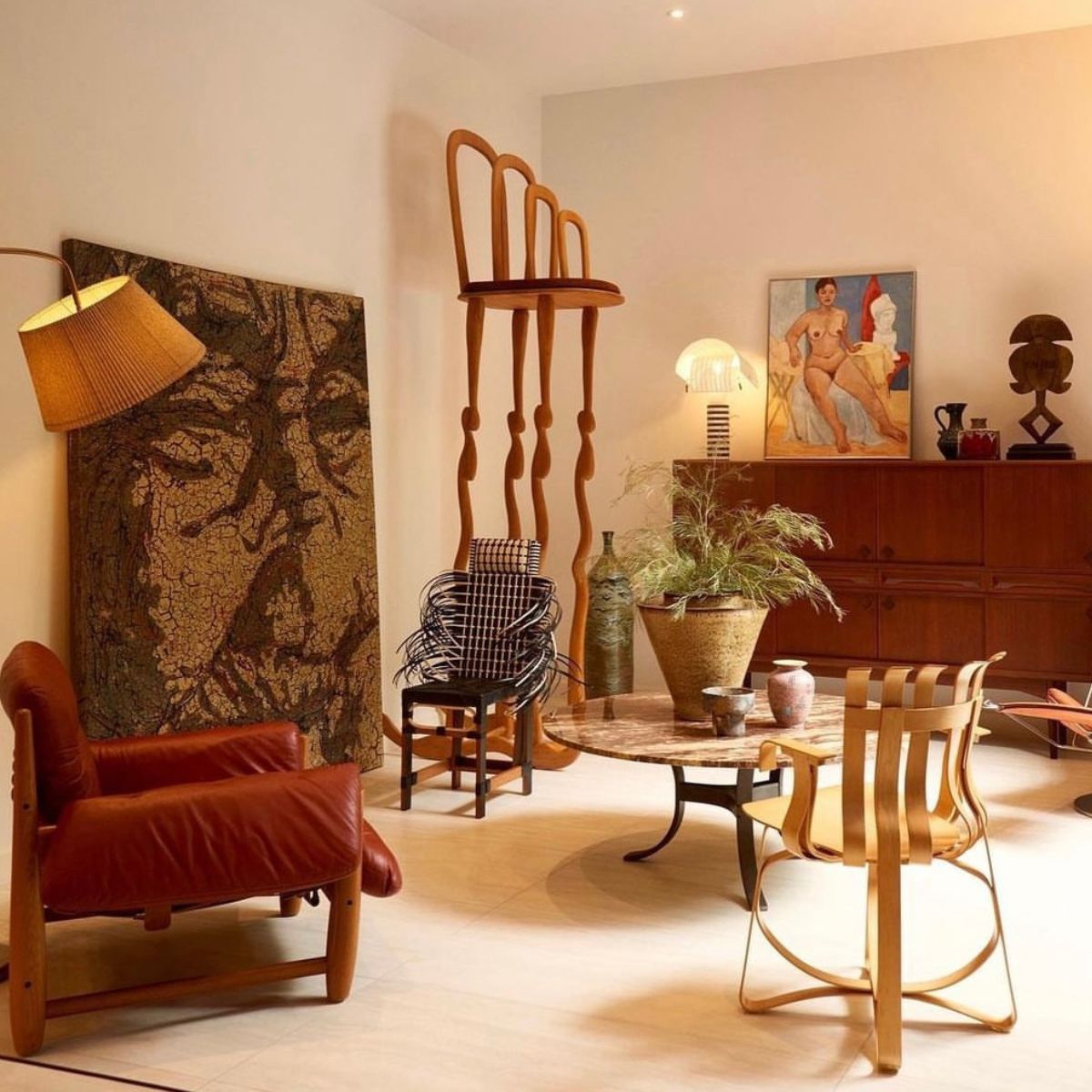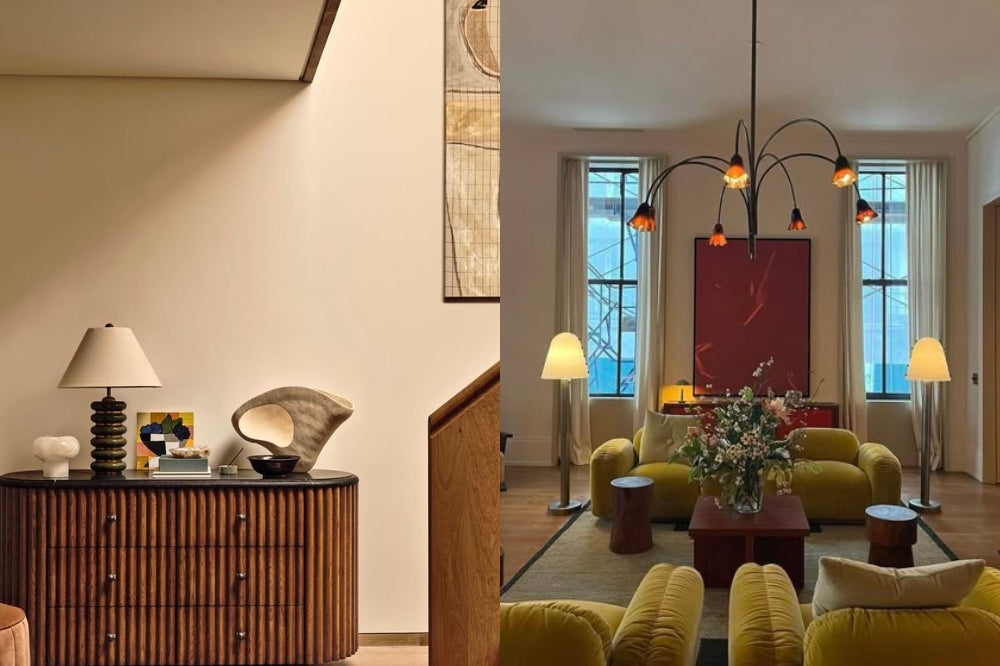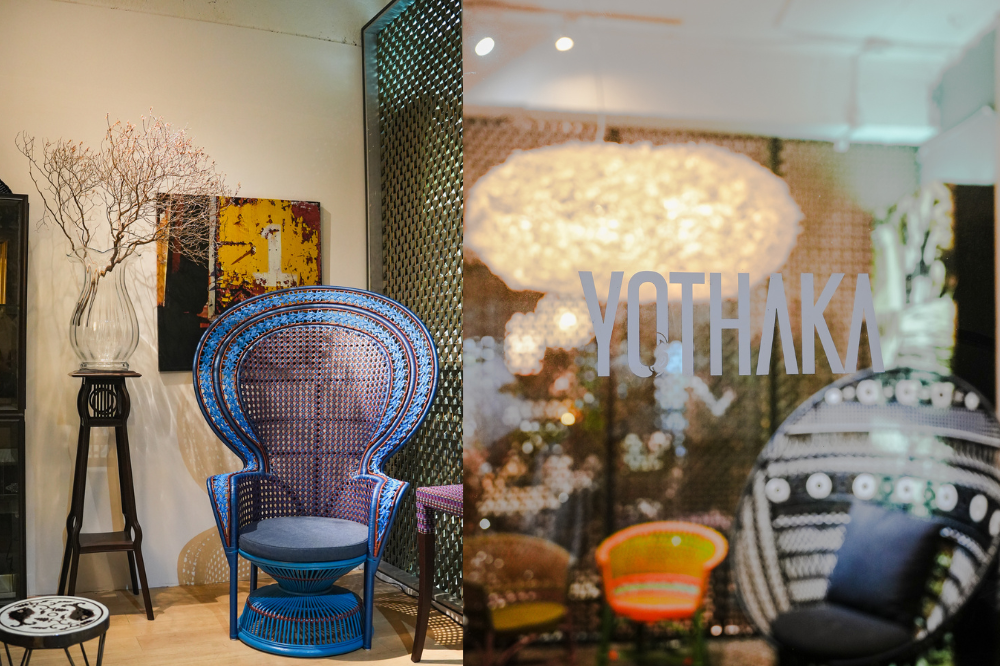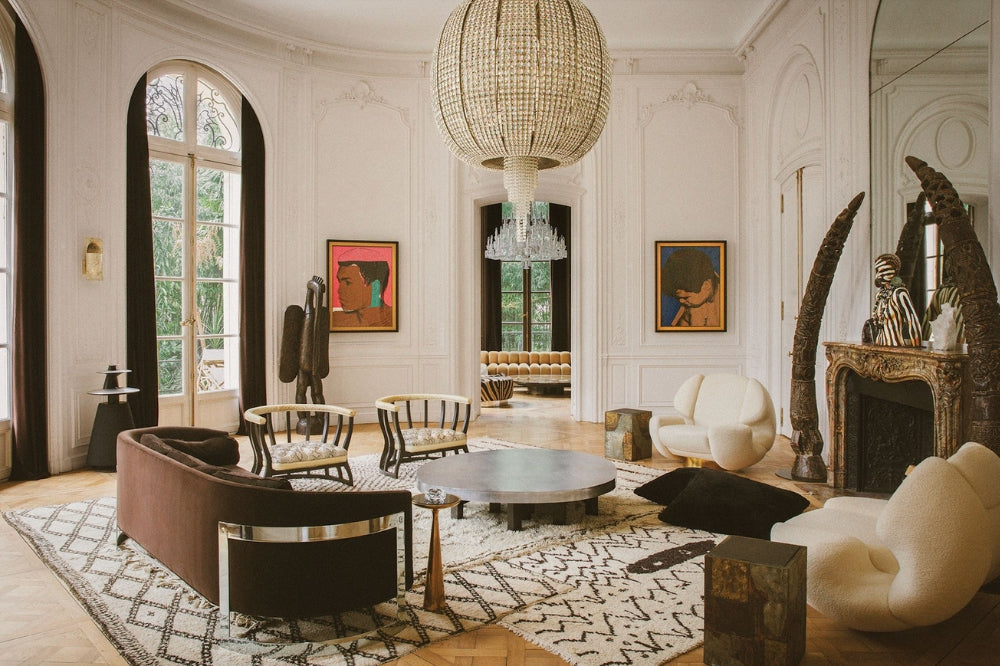How to Add Drama to Your Home—Without the Clutter
This is a guide for those who want their space to stand out—quietly. For those who crave interiors with depth and personality, but without the visual noise. It’s all about creating bold, memorable spaces that still feel calm and cohesive.
1. Design Contrast with a Limited Colour Palette

Left: Dramatic interior living room with deep red velvet sofa, oversized fabric pendant light, moody lighting, and artful wall decor, showcasing how to add drama to your home through bold colour and curated textures
Right: Curated modern living room with olive green velvet sofa, zebra print cushions, sculptural wooden coffee table, and a statement wall textile, demonstrating how to add subtle drama to a minimalist interior through colour and texture.
Colour is often the first thing we associate with drama in interior design. While recent trends have leaned into soft beiges and low-contrast palettes that soothe the eye,there’s something deeply compelling about a home that dares to be expressive. But going bold doesn’t mean going overboard.
The key is contrast. You don’t need to flood your space with saturated hues—just introduce opposing tones in subtle, refined ways. For example, if you're drawn to the classic tension between red and green, consider softened versions of each: mossy sage and muted terracotta, for instance, can feel warm and grounding while still creating visual tension.
Tip: If you’re curious about contrast but hesitant to commit, think of colour as a gentle suggestion rather than a bold statement. Use it sparingly and thoughtfully—through a vase, a painting frame, or the green of a potted plant. Let the larger surfaces like walls and floors remain neutral, and allow the drama to emerge through small, intentional gestures.
2. Embrace Texture as a Statement
When done thoughtfully, using texture in interior design can add just as much impact as colour or pattern—if not more. In fact, texture is one of the most effective ways to create visual depth in a minimalist or neutral space. Picture a matte concrete wall contrasted with soft boucle seating, or a sleek leather bench atop a handwoven rug—these tactile layers are what give subtle dramatic interiors their richness. For those looking to add drama to their home without adding clutter, texture offers a quiet yet powerful design tool that keeps the focus on atmosphere, not accessories.
Above: Modern dramatic interior showcasing layered textures through a ribbed wood dresser, sculptural ceramic decor, velvet pouf, and patterned rug.
Tip: Look for everyday pieces where you can introduce a more dynamic, tactile element.
Instead of opting for a smooth, polished coffee table, try one made of raw or textured wood that brings in natural grain and depth. Or consider a velvet sofa that adds softness and visual richness, compared to more uniform, flat-surfaced materials. Take a look at our website to find items with just the right texture, such as this stylish teak round coffee table:

Round low teak coffee table with natural grain and raw edge detail, supported by 3 cylindrical legs.
3. Use Lighting to Create Mood and Depth
Lighting isn’t just functional—it’s one of the most powerful ways to add drama to your home and shape how a space feels. Layered lighting, which combines ambient, task, and accent light sources, helps create visual depth and atmosphere. Also, by approaching lighting devices not just as tools, but as design elements you can dive deeper into incorporating interesting textures and materials, contrasting colours and visual motifs that tell a story or counter balance other elements in the room. By thinking about colour, texture and shape you can create a space that feels intentional and expressive while remaining functional.
Tip: if you are only starting to re-think how lighting devises are structured in your home, check out our Lighting 101 Guide that lays out the foundation for layered, functional and cozy lighting.
4. Curate, Don’t Decorate
Curated home decor invites you to focus on meaning, contrast, and dialogue between styles. At its core, drama in interior design is about tension, juxtaposition, and emotional layering. One way to explore that is by thoughtfully mixing aesthetics—pairing a sleek, abstract chair with an otherwise traditional room, or adding bold, patterned hardware to the textured grain of a vintage wood cabinet. These subtle contrasts introduce both visual interest and design personality.
As you explore different interior styles, consider not just the look they offer, but the philosophy behind them—what values or emotions do they bring to a space? To learn more, check out our interior design style guide for a foundational overview of what each style represents. Also, don’t underestimate the power of negative space. Sometimes, it’s the quiet moments in a room—the empty surfaces—that give the eye a place to rest and make the bolder elements shine.

Above: Close-up of wooden cabinet doors with intricate natural grain patterns and round red handles, dramatically lit to emphasise texture and shadow play.
Tip: When styling a small area like a shelf or console table, start by imagining the story you want to tell. Are the objects connected through colour, material, geometry, or history? This intentional decorating process not only adds depth but helps you create a space that feels uniquely your own.

Stylish living room featuring a bold black and white striped sofa, sculptural cork coffee table, vintage portrait painting, and layered lighting from a rattan floor lamp and paper pendant. Decorative details include a floral-painted column and mid-century velvet chairs, creating a warm, eclectic atmosphere.
5. Introduce One Unexpected Element
This is your chance to make a truly bold statement—one that captures attention, tells a story, and sparks conversation. Think of it as the centrepiece of your home’s personality: a one-of- a-kind item you discovered at a flea market, inherited from family, or even created yourself. Whether it’s a statement furniture piece, a sculptural light fixture, or a vintage find that carries a special memory, introducing one unexpected element can instantly take your space to the next level. These bold decorative accents deserve thoughtful placement—choose a spot where they can shine naturally without clashing with the rest of the room. The goal is to surprise and delight, while still keeping the composition cohesive.
Tip: When incorporating a standout piece, consider unexpected ways it can capture attention. It might be an everyday object with an unconventional shape, a vintage item that’s been restored or reimagined, or something with a distinct texture that invites a second look. Let your curiosity guide you—this process often starts with seeing familiar things in a new light. This Siamese carved wooden hand chair might be just what you’re looking for.

Above: Sculptural wooden armchair carved in the shape of an open hand, with detailed fingers and natural wood grain, combining function with artistic form.
